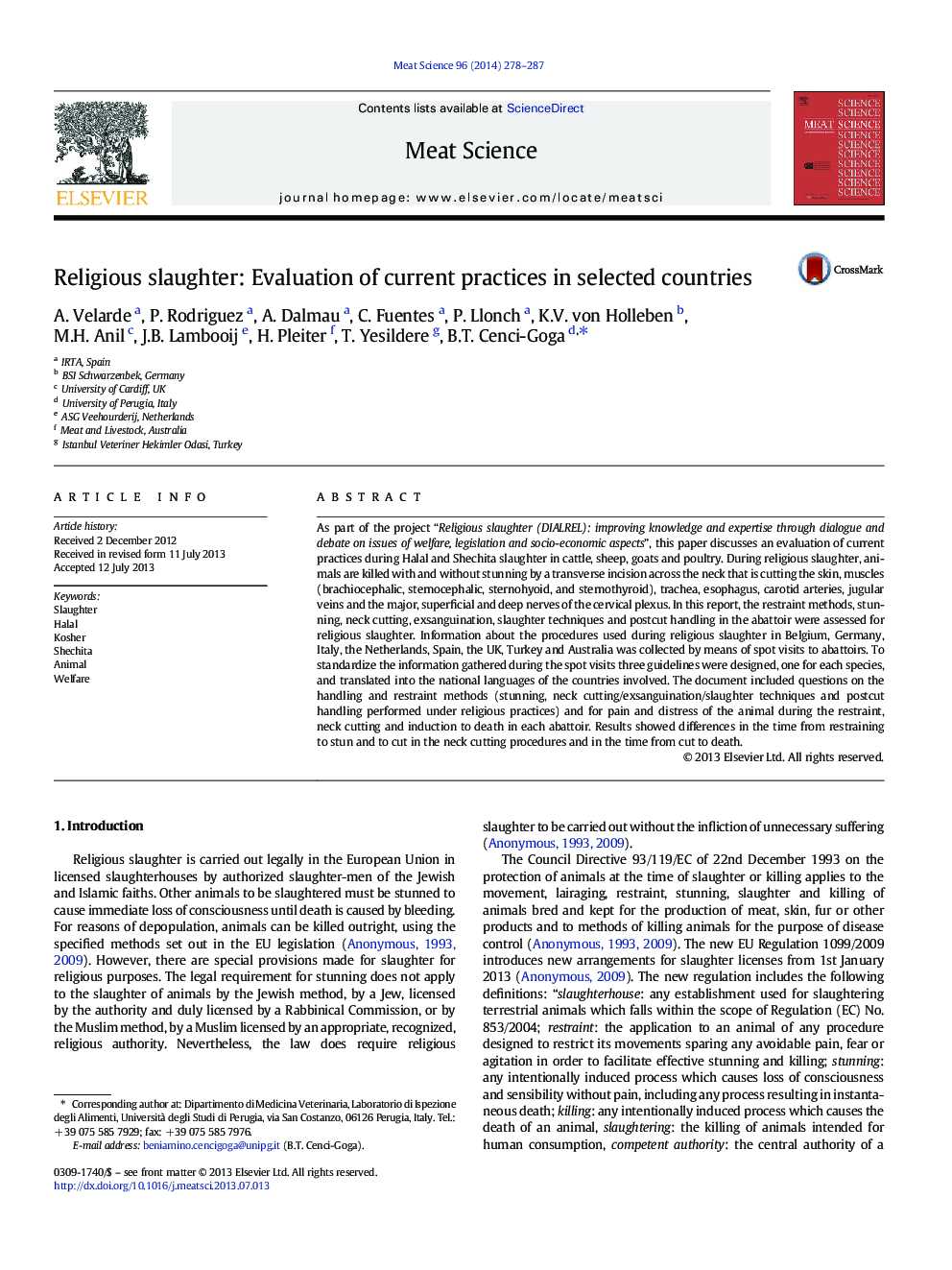| کد مقاله | کد نشریه | سال انتشار | مقاله انگلیسی | نسخه تمام متن |
|---|---|---|---|---|
| 5791458 | 1109610 | 2014 | 10 صفحه PDF | دانلود رایگان |
- First attempt to analyze the methods of religious slaughter in selected abattoirs
- Evaluation of current practice during Halal and Shechita slaughter
- Experience gathered by DIALREL partners during spot visits in different abattoirs
- Effect of the current methods of Halal and Shechita slaughter on animal welfare
As part of the project “Religious slaughter (DIALREL): improving knowledge and expertise through dialogue and debate on issues of welfare, legislation and socio-economic aspects”, this paper discusses an evaluation of current practices during Halal and Shechita slaughter in cattle, sheep, goats and poultry. During religious slaughter, animals are killed with and without stunning by a transverse incision across the neck that is cutting the skin, muscles (brachiocephalic, sternocephalic, sternohyoid, and sternothyroid), trachea, esophagus, carotid arteries, jugular veins and the major, superficial and deep nerves of the cervical plexus. In this report, the restraint methods, stunning, neck cutting, exsanguination, slaughter techniques and postcut handling in the abattoir were assessed for religious slaughter. Information about the procedures used during religious slaughter in Belgium, Germany, Italy, the Netherlands, Spain, the UK, Turkey and Australia was collected by means of spot visits to abattoirs. To standardize the information gathered during the spot visits three guidelines were designed, one for each species, and translated into the national languages of the countries involved. The document included questions on the handling and restraint methods (stunning, neck cutting/exsanguination/slaughter techniques and postcut handling performed under religious practices) and for pain and distress of the animal during the restraint, neck cutting and induction to death in each abattoir. Results showed differences in the time from restraining to stun and to cut in the neck cutting procedures and in the time from cut to death.
Journal: Meat Science - Volume 96, Issue 1, January 2014, Pages 278-287
